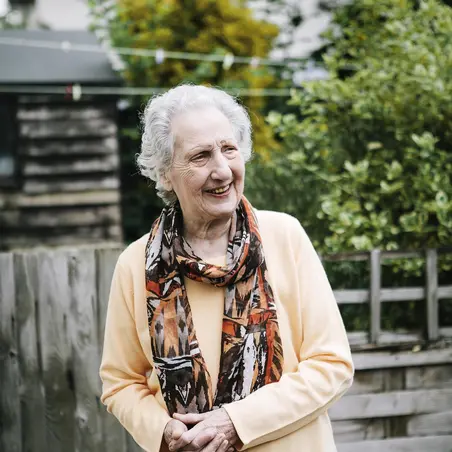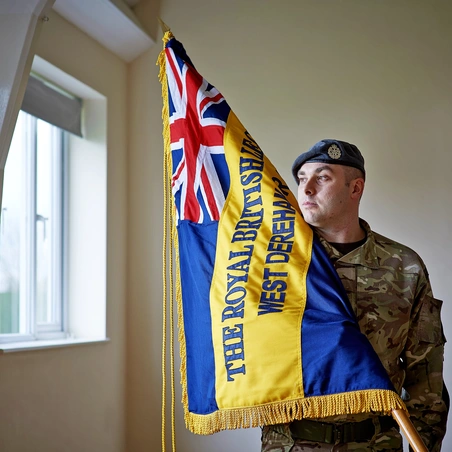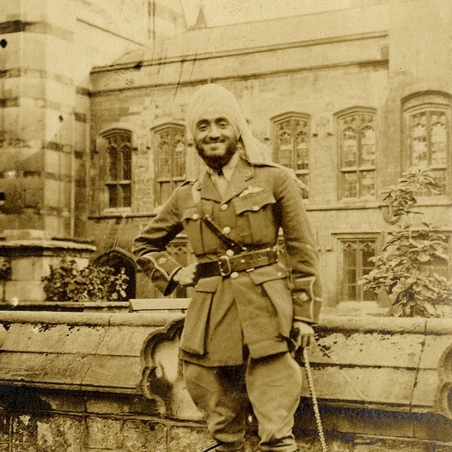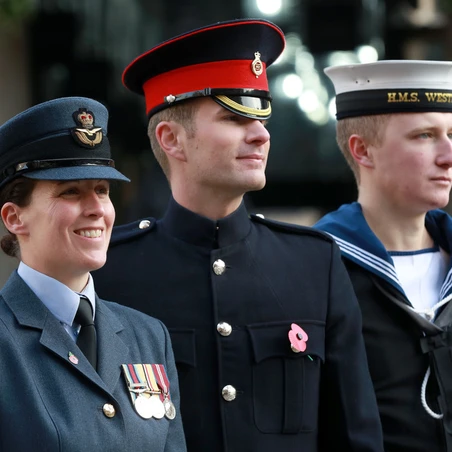In 1941 Des Lush joined the RAF with hopes of becoming a pilot. Three years later he flew his first operation as a Bomb Aimer.
I grew up in an old Victorian house on Wimbledon Common, and was educated at King’s College School, Wimbledon – it was my good fortune to visit the tennis club after school, for which I was charged sixpence providing I had my cap on.
Being interested in the Army, I joined the school cadet force, which I thoroughly enjoyed. After completing sixth form, at the age of 17 I joined Balfour Williamson – an old established merchant bank with interests in South America.
I also enlisted in the Home Guard as, having received basic training with the cadets, I thought this would be useful.

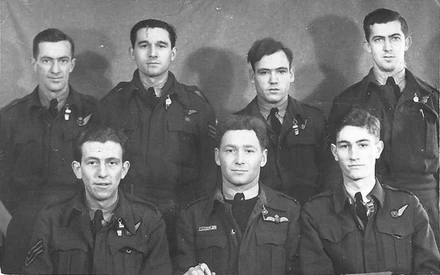
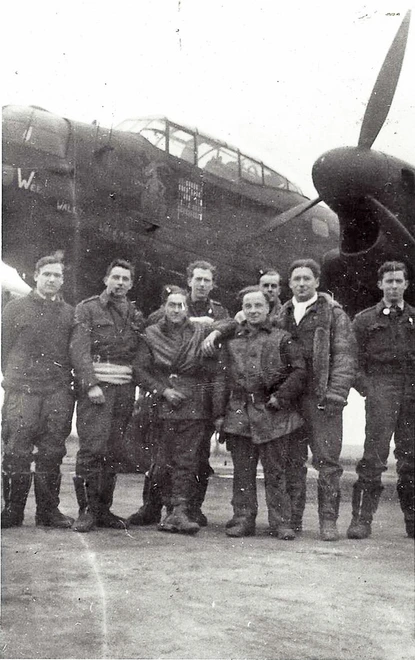
Joining the RAF
I decided to join the RAF, as I had always had an interest in flying and thought I could make the grade as a pilot.
On 17 October 1941, I joined a unit in north London where I was given the rank of AC2 with the regimental number 1801369.
After completing the various aptitude tests, I was selected for flying training and was posted to Perth in Scotland. Following 12 hours of flying I went solo for ten minutes and was told I had passed the test and would be posted to the Royal Canadian Air Force Station at Fingal, near Toronto.
My forage cap now sported a white flash, which indicated I was part of the air crew. I felt very proud of this and considered myself very fortunate. After another 12 hours of training in Halifax bombers, I was told that I would not make the time limit for training as a pilot and would be re-trained as a Bomb Aimer/Navigator – both of which I eventually qualified to undertake.
I was promoted to Pilot Officer and after attending a further course – this time for engineer training in Wales – I was posted to RAF Hixon, Staffordshire, where I trained on Wellingtons as a Bomb Aimer and a Gunner.
In November 1944, I was posted to 625 Squadron, located at RAF Kelstern; it subsequently moved to RAF Scampton.
On 18 November 1944, I flew my first operation: a night raid on an oil refinery in Wanne-Eickel, Germany. Being a Bomb Aimer required you to lie down flat, peering through the front turret with the gunner sitting immediately above you.
It was noisy, cramped and at times very uncomfortable.
My bombing experience targeted most of the major cities and towns in Germany, including Hamburg, Munich, Dortmund and Cologne, as well as other important targets, such as submarine workshops and oil refineries.
Although I was the official Bomb Aimer, I was also delegated to be the Assistant Pilot, Navigator, Engineer and Gunner in the event of any of these being injured, as I had received basic training in all of these skills.
Luckily, this did not occur – which was very fortunate, because had I taken on the task of navigator we would probably still be flying today!
"I flew a total of 31 missions, although two of them had to be aborted."
This was because the outer port engine caught fire on one mission, and the outer starboard engine caught fire on another.
After being asked by the skipper if we should continue or turn back, there was unanimous agreement that we should return to base. Fortunately, the fires went out and the bombs were dropped in the North Sea.
Our crew consisted of an Australian pilot, who was also the skipper; a Canadian navigator; a Welsh engineer; a rear gunner from Yorkshire, and two other English members of the crew – including myself.
Our Lancaster was named ‘Wee Wally Wallaby’ and it was a very lucky plane.
We were only hit once – in the front turret – and although I was hit in the chest by a piece of Perspex, nobody was hurt.
My overriding memory of this period is that I was extremely lucky. Had I completed my pilot training, I would probably have been flying operations in 1943, when casualties were extremely high.
I was also very fortunate to be with a crew who all got on very well. The comradeship was outstanding, and we all had the desire to destroy the target and to return safely for a repeat performance.
At the end of the war I was posted to Romania as a Flight Lieutenant and Adjutant of 149 at a staging post near Bucharest. This was a small unit of 30 all ranks on an airfield located to refuel and carry out maintenance on aircraft flying to the Far East.
I was also tasked as a Co-Pilot to fly Dakotas; I managed to fly 304 hours at night.
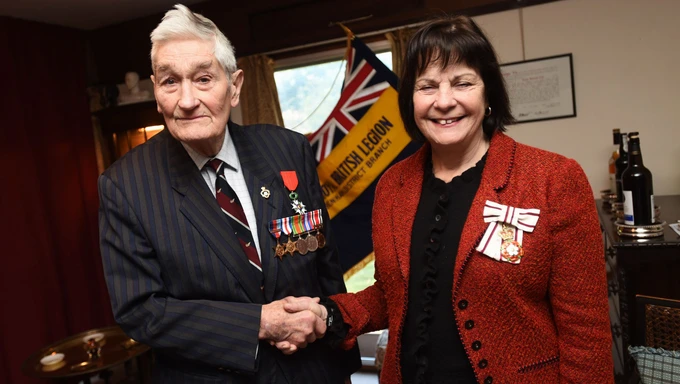
I left the RAF in April 1947, and commenced my career with the Guardian Assurance Company.
I worked in the City of London and became a Special Constable, where I served for the next 25 years.
The company eventually became AXA and I moved to a small village in Suffolk called Kenton, where I joined the local Legion branch.



